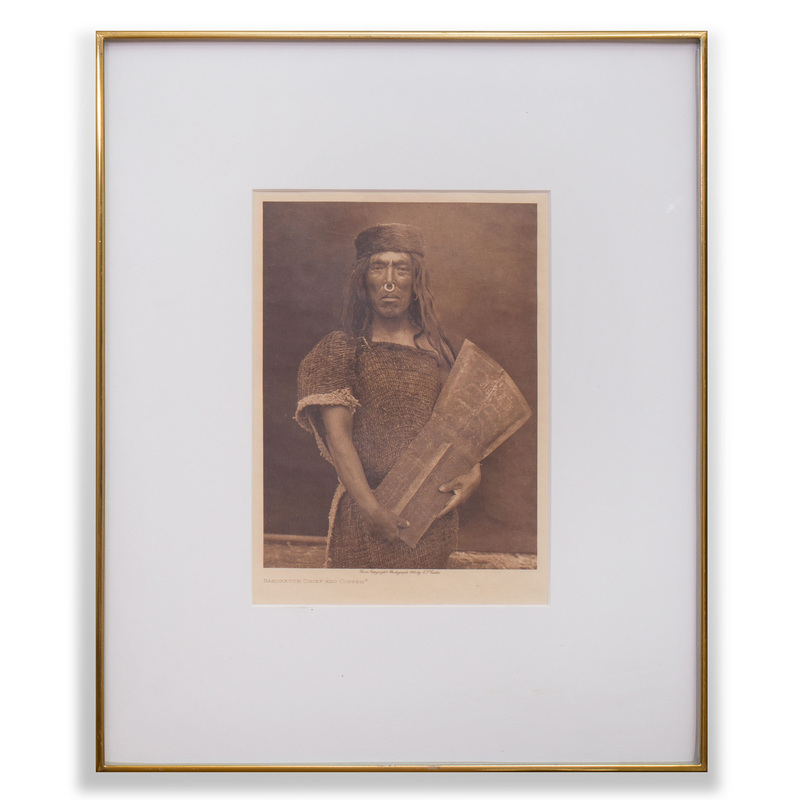includes the following titles; The Pooll, Rodin, Dolor, Lenbach, & Besnard, all on rice paper, ca 5.5" x 7.25" on original plates, ca 8.25" x 11.75" and in new acid free mats, 14" x 17". Edward Steichen (1879-1973) became interested in photography as a young man, believing it could be an expressive art form on a par with painting. He joined others with similar attitudes, in particular Alfred Stieglitz in a school known today as Pictoralism, or Photo-Secessionism, emphasizing its similarities to the Secessionist school of painting. In the early years, the images were reminiscent of painting from the Impressionist, Post-Impressionist, and Symbolist movements. These photographic pioneers revolutionized the aesthetic promise of this rapidly developing medium by imitating the softer focus of painting in their photographs through many new techniques both in the taking of the image and in its processing in the darkroom. Stieglitz began publishing Camera Work in 1903 to highlight this new art form. The photographs of the magazine were reproduced as photogravures, and by doing so, the publication was able to reproduce the tonality of the original photographs. The gravures were then and still are considered collectors items. After opening the Little Galleries of the Photo Secession with Alfred Stieglitz in 1905, Steichen became enamored of the new Modernist schools of painters, and moved to a style of photography with clean, uncluttered images and compositions, a view Stieglitz also came to embrace. During the 1920s and 1930s Steichen worked as a commercial photographer for Conde Naste publications including Vogue and Vanity Fair, and from 1947-1962 was Director of the Department of Photography at the Museum of Modern Art in New York. Provenance: Ex James E. Sanders Collection Condition: VG+.
includes the following titles; The Pooll, Rodin, Dolor, Lenbach, & Besnard, all on rice paper, ca 5.5" x 7.25" on original plates, ca 8.25" x 11.75" and in new acid free mats, 14" x 17". Edward Steichen (1879-1973) became interested in photography as a young man, believing it could be an expressive art form on a par with painting. He joined others with similar attitudes, in particular Alfred Stieglitz in a school known today as Pictoralism, or Photo-Secessionism, emphasizing its similarities to the Secessionist school of painting. In the early years, the images were reminiscent of painting from the Impressionist, Post-Impressionist, and Symbolist movements. These photographic pioneers revolutionized the aesthetic promise of this rapidly developing medium by imitating the softer focus of painting in their photographs through many new techniques both in the taking of the image and in its processing in the darkroom. Stieglitz began publishing Camera Work in 1903 to highlight this new art form. The photographs of the magazine were reproduced as photogravures, and by doing so, the publication was able to reproduce the tonality of the original photographs. The gravures were then and still are considered collectors items. After opening the Little Galleries of the Photo Secession with Alfred Stieglitz in 1905, Steichen became enamored of the new Modernist schools of painters, and moved to a style of photography with clean, uncluttered images and compositions, a view Stieglitz also came to embrace. During the 1920s and 1930s Steichen worked as a commercial photographer for Conde Naste publications including Vogue and Vanity Fair, and from 1947-1962 was Director of the Department of Photography at the Museum of Modern Art in New York. Provenance: Ex James E. Sanders Collection Condition: VG+.







Testen Sie LotSearch und seine Premium-Features 7 Tage - ohne Kosten!
Lassen Sie sich automatisch über neue Objekte in kommenden Auktionen benachrichtigen.
Suchauftrag anlegen